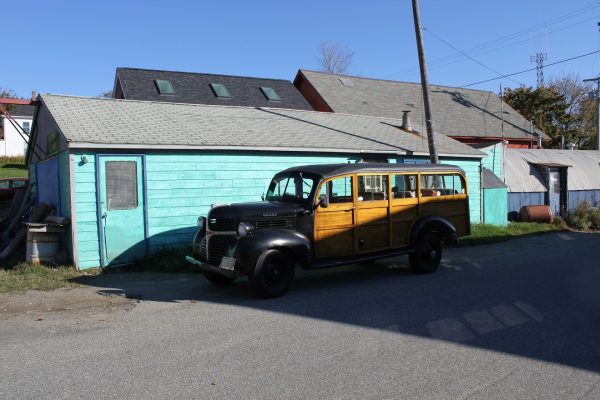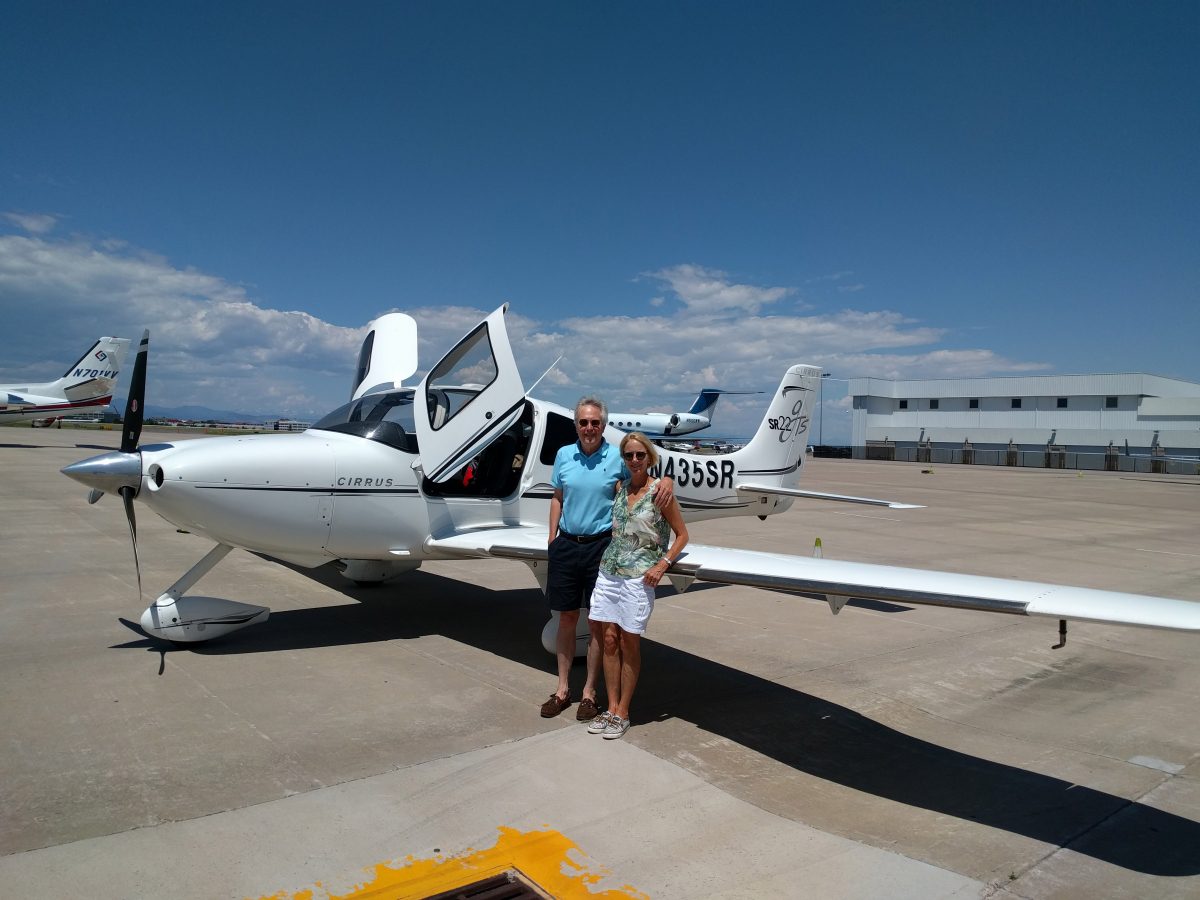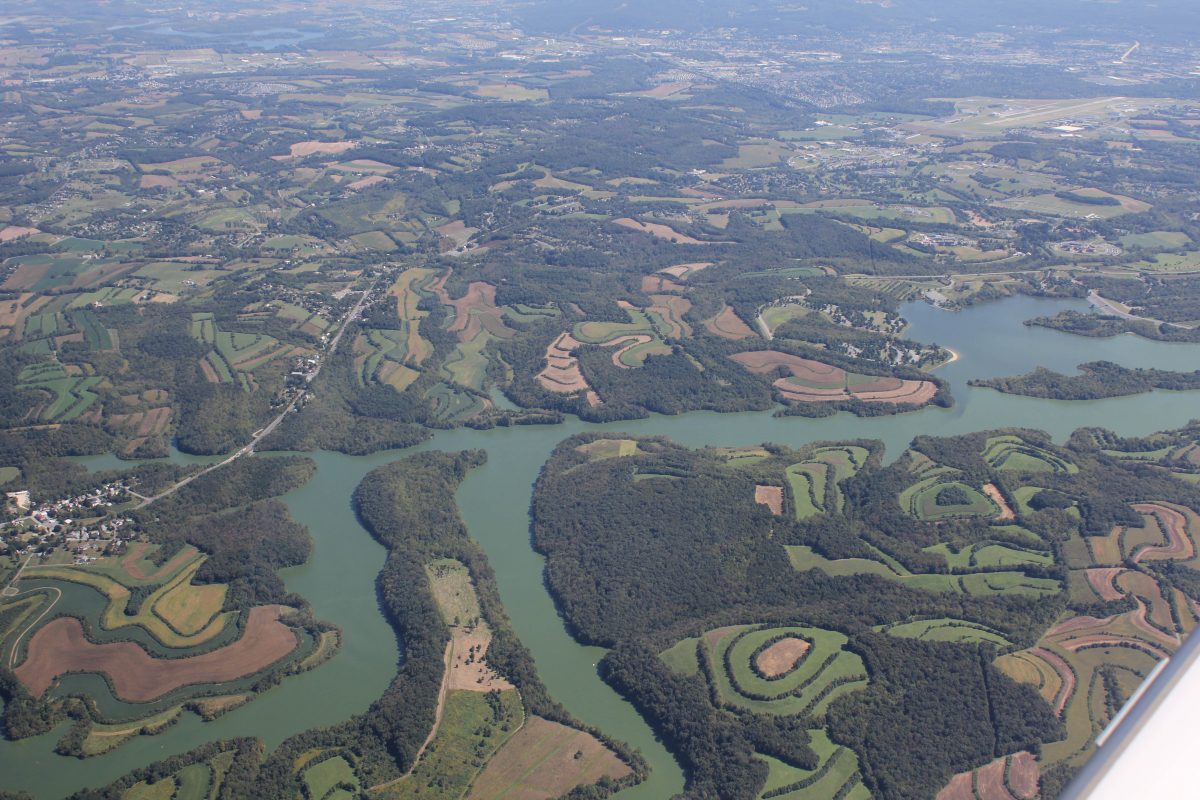Thoughts on a journey through small-town America

For more than four years, James and Deborah Fallows explored parts of the country that can sometimes get overlooked by the national news media. Flying their own plane, and writing pieces for The Atlantic magazine, they discovered a richness and vibrancy in cities as large as Columbus, Ohio and as small as Ajo, Arizona. Their writings have been compiled into a book, Our Towns: A 100,000-Mile Journey into the Heart of America.
On Nov. 13, the UNC Charlotte Urban Institute will host a public discussion with the Fallowses about their findings, and how their discoveries overlap with the civic agendas of cities and towns in central North and South Carolina.
Jim and Deb Fallows spoke recently with Mary Newsom, director of urban policy initiatives at the institute. Their conversation has been edited for brevity and clarity.
Q. You visited a lot of small cities and towns, and wrote about more than two dozen of them. You were looking for – and found – success stories. Is there one overarching headline from all those different spots?
Jim Fallows: One overarching theme, from a national perspective, is that [in] this time of polarization and dysfunction nationally, regardless of your political outlook, there is a tremendous and underappreciated amount of local-level renewal and forward motion going on. Telling that national story is the main thing we are trying to do. And city by city, we found some recognizable patterns between cities that are able to move ahead more successfully.
Q. At the institute, we’ve begun a project looking at places in our region. We think some of them have good stories to tell, but others may be struggling with finding new leadership or getting foothold in today’s economy. Do you have any advice for places that are struggling?
Deb Fallows: I think the two key elements are, one, somebody who will take some kind of leadership, and then, two, having a consensus among the voices in the town so they can focus. The leadership can come from one person – whether it’s a librarian or teacher or someone in the city government – or maybe a group, or the business community. But it’s a person who steps up and says, “We need to make some changes in this town, here are some issues.”
Jim Fallows: I would add two things. One is a clear understanding of the place you are talking about: its history, its challenges, its assets, the story of what the potential is in a given place. In some areas it’s the potential for advanced agricultural technology. In others, it’s using a past manufacturing heritage, or transportation, or education. But a clear-eyed sense of the local potential.
The other is, we found that places able to make transitions had deliberately made themselves open, trying to attract younger people, trying to attract immigrants from the rest of the country and rest of the world. They were finding ways to become a permeable place, rather than an off-putting one, recognizing that the elements of growth include a change in some of the traditional setups and being deliberately open to new people.
Deb Fallows: I would add to Jim’s first point that of having a clear-eyed sense of the local potential and having people understand what their local story is–their narrative–and seeing how that connects to the past and where they are going in the future. Finding those bits of pride and reality in the history of a town makes it a lot easier for people to engage.
Q. You write about what you call “local patriotism.” Some places have it and some seem not to. In places that seem to lack strong local patriotism, how can residents and civic leaders start to build it up?
Jim Fallows: There is a combination of natural inclination and developed skills. There are certain places that have more of a natural sense of place. For example, if you’re in a big suburban sprawl – I’m thinking of some of the big suburbs of New York and Los Angeles that are just sort of bedroom communities – people tend to move there because it is convenient, and then move someplace else. Other places have more deliberate architecture or historic reminders of their identity.

The Fallows with their plane. Photo: James and Deborah Fallows
We saw lots of places where there were deliberate efforts to try to cultivate civic fiber. In Duluth, [Minn.], the older generation decided it was their job to deliberately cultivate the people in their 20s and early 30s. There is a group in Seattle called Citizen University, [that is] all about learning the skills of being a citizen and being involved in your town. Communities can be more effective and successful when they work at it.
Deb Fallows: We have seen so many instances of people starting very small and having it grow into something much bigger. For example, in Bend, Oregon, the new library director in town said, “Let’s find out what people think about the library here.” They did a bunch of interviews only to find out nobody knew anything about the library. So, they said, “Let’s get our librarians to go out into the community and talk about what we do, and see how we can work together with different organizations.” Those baby steps grew into much more robust networks of activity.
Q. You say openness is a key attribute, and in some of the stories you tell, it was clear folks were intentional about bringing a lot of voices to the table. Do places that lacked that kind of wider intention of getting a lot of voices together have a tougher time, or did they achieve what they achieved without that broader effort?
Jim Fallows: My impression is there’s a combination of changing circumstances that people react to in different ways, and intentional advanced planning. For example, Allentown, Pennsylvania, over the last generation or so, has gone from being overwhelmingly Pennsylvania Dutch, white, and Protestant to being majority Latino, as there has been a lot of immigration from the New York area, largely Puerto Rican and Dominican families. That was initially a source of a lot of political and cultural friction. I think that’s now been deliberately embraced as the future of Allentown.
In the west Kansas towns we wrote about, Dodge City and Garden City, the decision was, a generation ago, when the meat-packing industry came in, they recognized there would be an ethnic change in the communities. I think there has been, among the white leadership, a deliberate sense of “This is how our region will survive,” and they found ways to make it happen.
Deb Fallows: The towns that are now open and inclusive got to that point from very different beginnings. Erie, Pennsylvania, has been an immigrant town for a century. It grew into a refugee town in the last 50 years. They figured out, “This is a strength for us and we’re going to build on this.”
There are towns that deliberately went out and sought out the varied populations that lived there. Eastport – next door to a Native American reservation and across the water from Canada – created a sort of tri-national group. It may seem contrived at first, but once it gets into place it feels like it’s important and less contrived. Those voices are bringing their perspective to the renewal going on.
Q. In a recent interview Jim said, “There is something larger happening … a burgeoning movement.” Can you explain what you were seeing?
Jim Fallows: One important trend is talent dispersal. While it remains true there is a powerful pull to the biggest cities, and the concentrations of finance in New York and technology in Seattle and San Francisco, there have also been dispersing forces making it feasible and attractive for people to do high-end professional work in smaller cities– Minneapolis or Portland or Dallas — to places more modest in scale like Greenville, South Carolina, Duluth, and Sioux Falls, South Dakota.
There is a trend that I think has been under-reported by national media: second- and third-level cities in size that are attracting start-up businesses, young people and young families. It’s because communications make that possible, real estate differentials made it attractive and people can have a different kind of life. That’s a trend we just began to notice when we started out, and now we think is a real phenomenon.
Q. When you’re here in November you’ll be in the largest city and metro area in the Carolinas. It’s common throughout the U.S. for city people to not think much about — or maybe even look down on — small-town and rural areas. Obviously you wouldn’t agree with that view. What message can you offer urban residents about what you found in the less-urban regions you visited?
Deb Fallows: Like, why should they care?

An aerial view over America. Photo: James and Deborah Fallows
Q. Yeah, pretty much.
Jim Fallows: Deb and I both think of ourselves as people of small-town America, so we felt as if we were going back to our homeland. The more we traveled, the more we thought this is where the interesting part of America is right now. But, I submit, the degree of surprise in big American cities is less than the potential for significant surprise in non-big-city America. People in big cities tend to have a sense of small-town America as just an object that things happen to, where political waves and economic waves and disasters happen.
The way the entirety of the American fabric is responsive and creative and trying to figure out its next move is significant. And interesting. There is a lot more underappreciated fascination in the entirety of America than people think. That was true when de Tocqueville was traveling around and it’s true now.
Deb Fallows: Those who grew up in smaller towns or who have family in some other region or have some reason to visit them regularly will understand quickly, because they recognize it. For other people, I think it’s been harder to be in touch with the depth and richness of small towns. Part of this message is that there’s so much interesting and compelling and creative and imaginative that’s happening that we haven’t had a chance to see.
Q. [Speaking of creativity,] another thread running through the book is the role of local breweries and distilleries. Other than providing good-tasting beverages, do these local businesses play a deeper role?
Jim Fallows: This started out as a joke, because I love craft beers, and this is my counterpart to Deb’s illustration of swimming pools or libraries as markers for civic success. But it’s an important marker. Across the country several hundred thousand people are employed in this sector with relatively good wages overall. It’s maybe three or four times as many people as are in the coal mining industry. They are [also] a significant vector of downtown recovery, because they usually go where land is cheap. So in dicey neighborhoods, they attract people for lunchtime or evening time. Then you see restaurants grow up around them, little stores, people live there, etc. They are a real marker of localism — a locally-based industry.